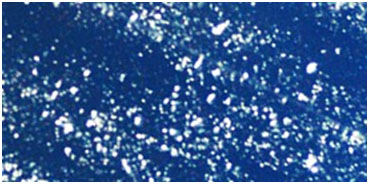Practical philosophy: How to observe
Discussion around an image philosophical debate.
The observation on the screen
We see on the screen this photography:
1) Question: what do you see?
Pupil’s answers:
Pupil’s answers:
Nebula (Remi), thinks he recognize what he has already seen a book with a caption: Nebula
David sees the stars. Most of them see stars in the sky: a starry sky
Valentin sees a light and clouds in front of the stars
David sees dust in the front.
David sees the stars. Most of them see stars in the sky: a starry sky
Valentin sees a light and clouds in front of the stars
David sees dust in the front.
2) Question: Do you see a starry sky, or is what we judge that it is a starry sky?
Comments: When you see a starry sky, one judge already. What do we see immediately without recognizing
Comments: When you see a starry sky, one judge already. What do we see immediately without recognizing
Pupil’s answers:
Pierrick: we see bright spots, more or less extended, more or less intense
We see bright spots on a rather dark background. We also see spots of light or shadow.
We see bright spots on a rather dark background. We also see spots of light or shadow.
3) Question: Why did we judge that we see the stars in the sky?
Pupil’s answers:
Valentin: Our Culture
Comments: We judge according to our culture, compare to what we saw in a book. It depends on the context (astro-philo session).We recognize a starry sky. To recognize has the sense of identification with prior knowledge.
Comments: We judge according to our culture, compare to what we saw in a book. It depends on the context (astro-philo session).We recognize a starry sky. To recognize has the sense of identification with prior knowledge.
We do not see the stars, we judge.
4) Question: What is involve in this?
Pupil’s answers:
Memory, is involved in the decision on what we see. Shall we perceive with our memory? One sees what one wants to see (Julian)
5) Question: If we remove the image, how to see the picture again?
Pupil’s answers and comments:
The memory is a mental representation. It also uses the imagination. In our memory, there is a stock image that we will expand, this is our imagination. Imagination is the activity to represent images.
6) Question: Is the image represents the starry sky.
Pupil’s answers and comments:
What we see is a picture is a representation. What type (painting, Photography)? In fact, it is a photographic representation.
7) Question: Is she is artistic?
Comments: This is not a work of art, but there is also an aesthetic concern.
Comments: This is not a work of art, but there is also an aesthetic concern.
8) ) Question: What else could this photography be?
Pupil’s answers:
Light source with a panel with holes ...
Photo N°2

1) Question:What do you see?
Pupil’s answers:
Pupil’s answers:
Spraying paint on a blue background (David).
This could be a starry sky?
These are bubbles in an aquarium.
This could be a starry sky?
These are bubbles in an aquarium.
The small image comes from this photography

Conclusion In what we see, there is judgment, imagination.
OBSERVATION FORM.
Together, with the class, we look for the different specification that we can write on an observation form.
Date, Time and Place
Mean of observation (naked eye, binoculars, telescope, sunglasses ...)
Specifications magnification, technical specifications, openness.
Weather (well clear skies, no fog ...)
Object name (if known), form.
Position of the object in the sky (Height, Azimuth)
Type of object (planet, nebula ...)
Drawing a picture.
Mean of observation (naked eye, binoculars, telescope, sunglasses ...)
Specifications magnification, technical specifications, openness.
Weather (well clear skies, no fog ...)
Object name (if known), form.
Position of the object in the sky (Height, Azimuth)
Type of object (planet, nebula ...)
Drawing a picture.
Document Actions


